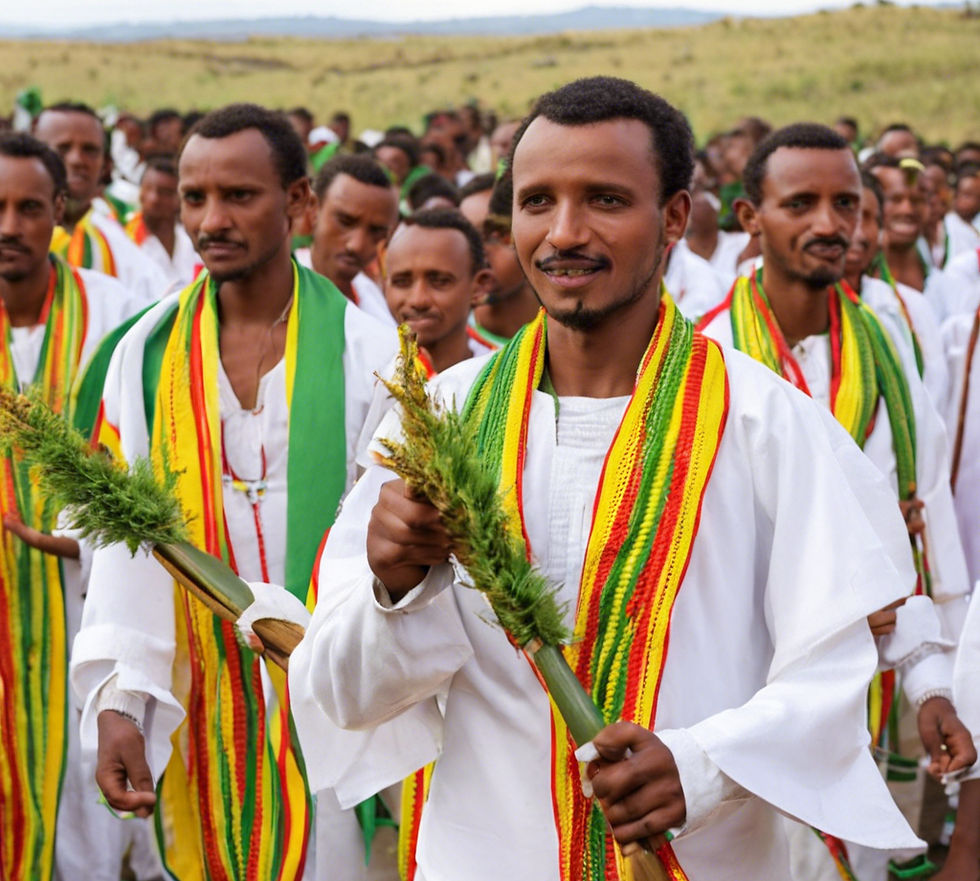Dispelling the lies
If you follow current Ethiopian politics you would be familiar with statist tropes about the protection of ‘nations and nationalities’ when in reality Ethiopia boasts remarkable linguistic, religious, and cultural diversity. This is a testament to the historical coexistence of various ethnic groups and the Abyssinian civilization that ensured the preservation of this diversity.
Ethiopia is home to over 80 distinct ethnic groups, each with its own language and dialect.
The monarchy's policies generally allowed linguistic diversity to flourish, with several languages recognized and promoted for official and educational purposes. Amharic served as the lingua franca for administrative purposes but did not suppress the use of other languages.
Ethiopia has a long history of religious pluralism, with Christianity and Islam being the two dominant religions. Under the monarchy, both Christianity and Islam were practiced freely, and religious tolerance was generally upheld. Additionally, traditional indigenous religions coexisted alongside these major faiths, contributing to the country's rich religious heritage.

Christians, Muslims and Animists all coexisting peacefully in a rare phenomena that is today called Ethiopia
The Abyssinian monarchy recognized the importance of preserving the country's cultural heritage as well and actively supported efforts to safeguard cultural practices, rituals, and customs. Festivals like Timkat, Meskel, and Irreecha have been celebrated across the country for centuries if not millennia, showcasing the staunch pro-diversity stance.
While the monarchy maintained central authority, it also respected the autonomy of various regions and ethnic groups within Ethiopia. Local leaders and traditional institutions were often allowed to govern their communities according to their customs and traditions, fostering a sense of local identity and belonging.
Claims that Irreecha (the Oromo thanksgiving festival) and Oromiffa (the Oromo language) were banned during Haile Selassie's reign are unfounded as there were no explicit bans on either Irreecha or Oromiffa at any point in time. There were, however, discrepancies in the level of attention and media coverage that Abyssinian holidays and languages received.
While it can be argued that this policy led to the marginalization of other ethnic groups, including the Oromo- whom along with their cultures and languages were often neglected, one must also consider that this is one of the most (if not the most) diverse countries in the world- it has no peers and cannot be judged by Western standards.
Indeed, as a result of this, Oromo cultural practices, including Irreecha, may have been discouraged or marginalized by the government, and the Oromo language, Oromiffa, may not have been given official recognition or support. However, it is imperative for any initiative or party that wishes the best for the horn to address the historical record factually.

Illustration of the Irreecha festival and how it is usually performed in Ethiopia
The reality was that the monarchy's efforts to foster national unity extended to strategic alliances through marriage arrangements with chieftains and elites from diverse ethnic groups across the realm. These matrimonial alliances served as a diplomatic tool to strengthen ties between the central government and smaller communities up until the murder of HIM Haile Selassie.
By forging marital connections with leaders and influential figures from various ethnic groups, the monarchy demonstrated its commitment to inclusivity and national integration. These marriages often transcended ethnic boundaries and contributed to the formation of cross-cultural bonds and indeed a multicultural class.
As such, cultural practices that are different from the Abyssinian standard, such as Irreecha, have indeed grown in popularity in Ethiopia especially in recent years. This increase in popularity can be attributed to several factors that reflect a broader societal shift that actively celebrates the diversity of the country.
In fact, there has been a resurgence of interest in traditional Ethiopian cultures and customs, driven by a desire to reconnect with heritage and identity. Many Ethiopians, particularly the youth, are embracing their cultural roots and actively participating in traditional festivals and rituals. This is also expected to lead to an increase in domestic tourism.
While these are current developments, it is important to note that the advent of globalization takes the lion-share of credit for this growth in cultural events such as Irreecha. As communities become more assertive in preserving their cultural heritage, there is a corresponding increase in the visibility and popularity of their cultural events and traditions.
Indeed, the reason why HIM Haile Selassie was blamed for such absurdities was partly due to opposition propaganda trying to topple the monarchy and partly to do with the rise of Neo-liberalism- which has dictated foreign policies of the West ever since. The Western powers as a result have had very little tolerance to traditionalist regimes across the globe.
Ethnic Federalism cannot be credited for the growth of Irreecha and Oromiffa. Rather we ought to credit a combination of factors such as the earlier mentioned rise of globalisation, new societal trends and demographic changes. Thus, it is anti-intellectual to claim that Irreecha and Oromiffa or any other language and cultural event had been suppressed by the monarchy.

Comments